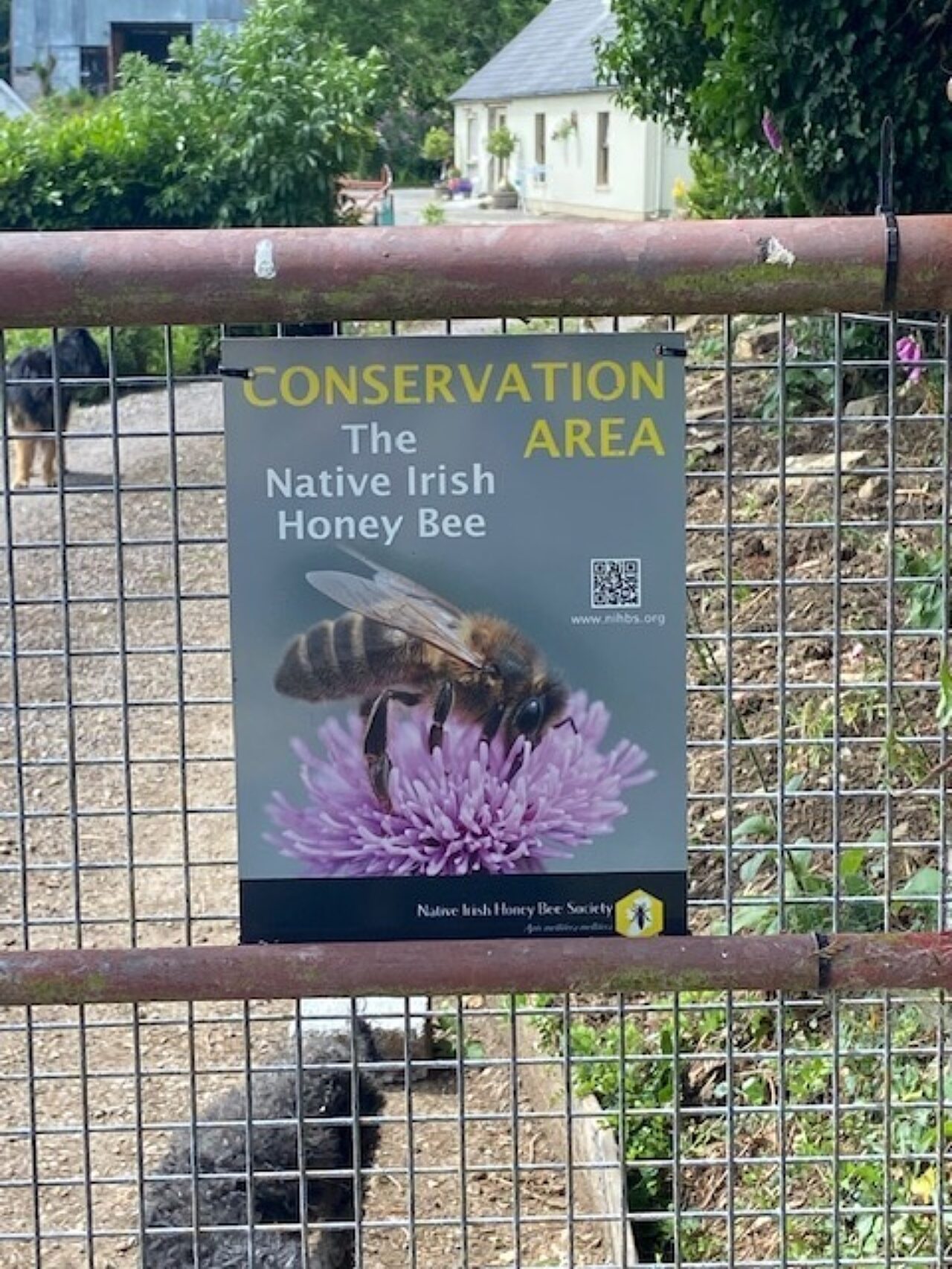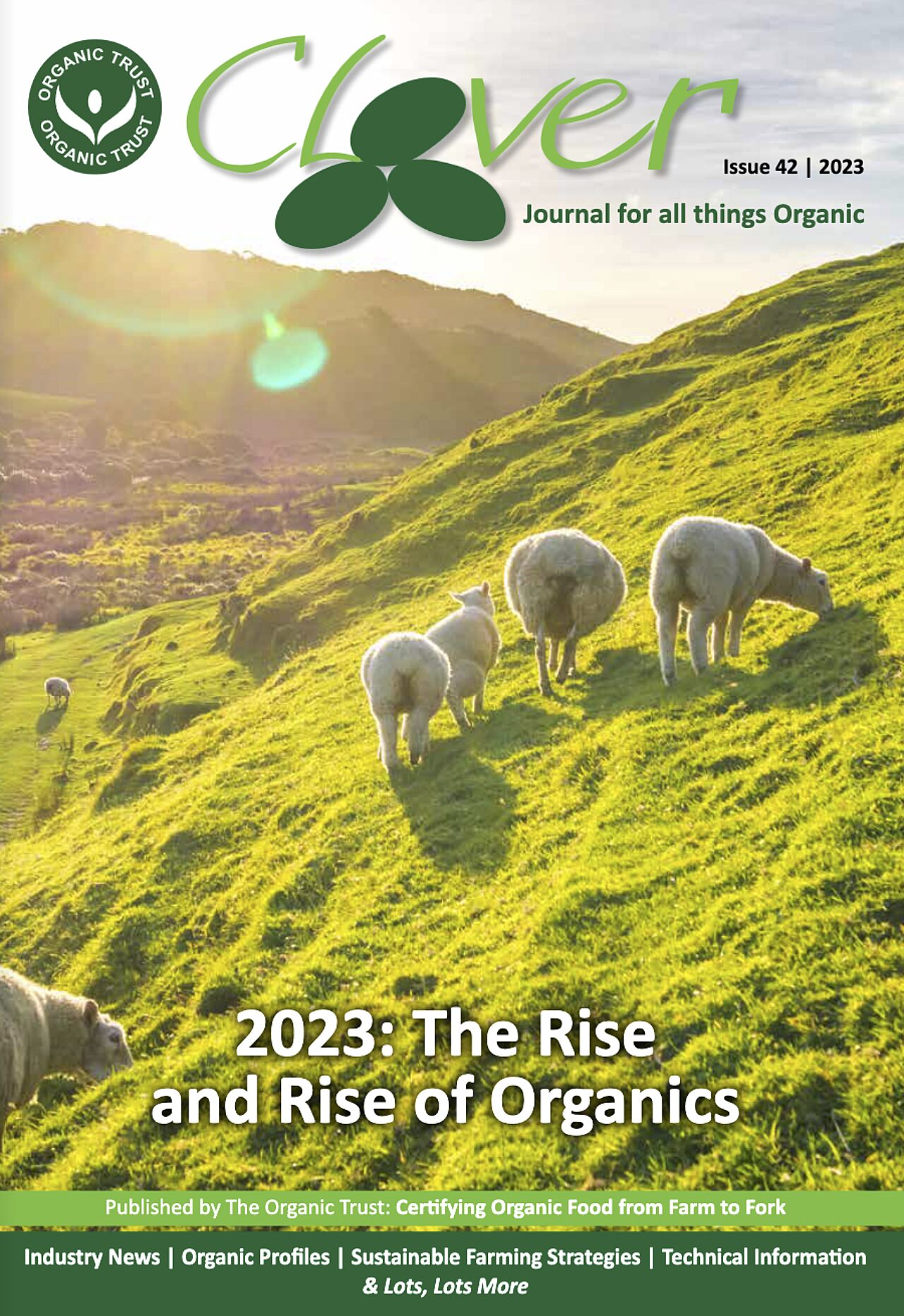
Native Irish Honey Bee Conservation Areas and the work of the Native Irish Honey Bee Society
by John Greenaway
In these few paragraphs I hope to be able to tell you a little about the work of the Native Irish Honey Bee Society (NIHBS) and of our interest as a Society in Conservation, Biodiversity and the wider wellbeing of our Environment.
The Native Irish Honey Bee Society (NIHBS) was formed in 2012 off the back of pioneering conservation efforts begun in the Nineties by committed beekeepers of the Galtee Valley in Munster. As an all-Ireland organisation, NIHBS has since then grown to a membership of over 1000 individuals, all of whom are committed to the conservation of Ireland’s only Native Honey Bee.
A very common response to mention of the native honey bee is, “Native Irish Honey Bee, is there such a thing, I didn’t know that”. Well, there is and it is under threat. The Native Irish Honey Bee, Apis mellifera mellifera, (A.m.m), this is its scientific name, is also called the Black Bee or the Dark European Honey Bee. It was originally widespread throughout the whole of northern Europe but sadly is no longer prevalent there due to many factors but mostly due to hybridisation.
However, there are a small number of areas where the European Dark Honey Bee still thrives, Ireland is one of those special places. In appearance, the native honey bee, is dark brown/black with no actual striping, abundant thoracic hair, bare abdomen and darkish wings. They are well adapted to our climatic conditions and can be observed flying even on damp days and are frugal with their consumption of their honey stores during winter. Surprisingly, they have the ability to produce good quantities of delicious tasting honey in the difficult Irish weather conditions !!
Unfortunately, the Native Irish Honey Bee, along with so many other pollinators, now faces many threats such as lack of sufficient natural habitat, loss of biodiverse environments, climate change, global warming and from the use of pesticides and insecticides all of which affect these insects. The Native Irish honey bees are also under threat from imported honey bee diseases and from hybridisation where other types of imported honey bees mate with the local honey bee and thereby alter the gene sequence of the Irish honey bee resulting in an offspring that can be aggressive or not so well adapted for our Irish climate.
The challenges of habitat and biodiversity loss, climate change and the use of pesticides and insecticides will be familiar to you and our members try to go about their beekeeping activities in an environmentally friendly way. We count amongst our NIHBS Conservation Areas, Organic Farms, Seed-saving organisations, regenerative farmers and those that maintain their lands using organic methods. For myself and whilst in England (fado fado) I was a member of the Henry Doubleday Organisation, now Garden Organic. I am particularly interested in Organic Gardening methods, Comfrey as a fertiliser, Mycelium to produce home grown mushrooms and seed saving.
The Native Irish Honey Bee Society has been campaigning to conserve our Native Honey Bee in three distinct ways. It is campaigning politically for a halt to the importation of non-native honey bees, and, there is a Bill going through the Seanad right now calling for its protection and the cessation of all honey bee imports. NIHBS also runs education days and Queen rearing courses for hundreds of beekeepers throughout the island of Ireland every year. This helps those beekeepers to become better at their art and helps to ensure that there is a ready supply of Native Queens and new colonies available for beginner beekeepers.
NIHBS also asks that individuals, interested groups and organisations, help set up and create Conservation Areas and agree, when it comes to honey bees, to only keep or allow the Native Irish Honey Bee in those areas. These NIHBS Conservation Areas are important to create buffer zones as safe havens so that the bees can mate in areas away from any imported bees.
There are now over 130 NIHBS Conservation Areas around the island of Ireland and the numbers are growing rapidly. There are Office of Public Works sites like Kilkenny castle, Hotel grounds like Ballymaloe, Beekeeping Associations, Organic Farms, Nature Reserves, Government buildings and lands like Stormont and Hillsborough, Golf Resorts such as Adare Manor, Reforestation projects like Cloudforests and so on.
All of these Conservation Areas are committed to the Environment generally and the Native Irish Honey Bee specifically. This may sound very niche, but the future of our native honey bee is at stake and everyone can help. NIHBS believe in a biodiverse environment with the Native honey bee as part of it.
In fact we say that a truly biodiverse environment is incomplete without Amm. NIHBS are members of the All-Ireland Pollinator Plan and helps to guide its Honey Bee Steering Group. The All-Ireland Pollinator Plan is a great initiative, a broad stroke approach to Conservation. What NIHB’s Conservation Areas try to achieve is a complementary but specific method of Conservation for the Native Honey Bee.
How can we all do more?
Individually by:
∙ planting a diverse set of native plants, which flower at different times of the year;
∙ buying raw honey from local farmers;
∙ buying products from sustainable agricultural practices, preferably organic
∙ avoiding pesticides, fungicides or herbicides in our gardens;
∙ protecting wild bee colonies when possible;
∙ making a bee water source by leaving a water bowl outside;
∙ helping sustain forest ecosystems;
∙ raising awareness around us by sharing this information within our communities and networks;
The decline of bees affects us all!
As beekeepers, or farmers by:
∙ reducing, or changing the usage of pesticides, herbicides…
∙ diversifying crops as much as possible, and/or planting attractive crops around the field;
∙ creating and maintaining hedgerows – let them flower to help pollinators and wildlife
As governments and decision-makers by:
∙ strengthening the participation of local communities in decision-making, in particular
that of local people, who know and respect ecosystems and biodiversity;
∙ enforcing strategic measures, including monetary incentives to help change;
∙ increasing collaboration between national and international organizations and academic and research networks to monitor and evaluate relevant data
If you wish to help in setting up a conservation area then you may want to join NIHBS, look over our website www.nihbs.org or write to the Conservation Area Officer at [email protected] for further information.
Lastly, we would encourage you to look out for NIHBS labels when buying honey in your local shop in order to help support their cause but also help support your local beekeeper who is trying to help save the Native Irish Honey Bee !!
Thank you,
John Greenaway,
NIHBS Conservation Area Officer

Issue 42 2023
What an amazing, fantastic, challenging, eventful year we've just had! So, where to start! This year we have seen a great deal of firsts in the Organic sector- firsts that have been called for by many of you for years, but that have finally come into view.